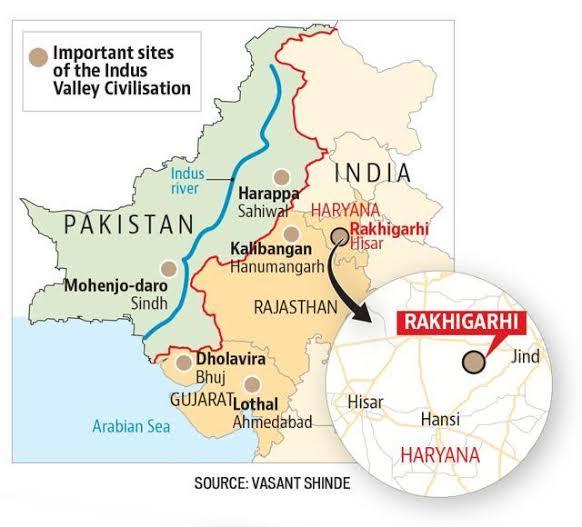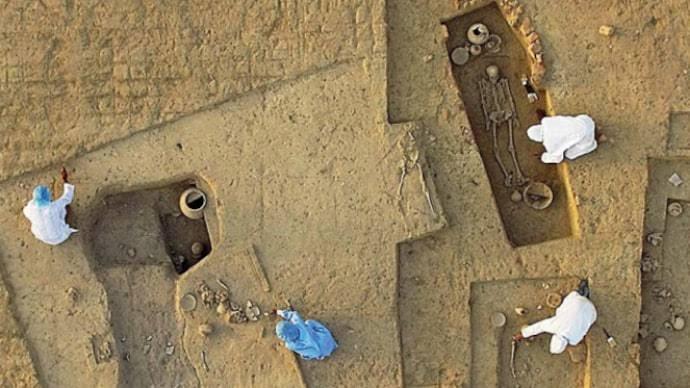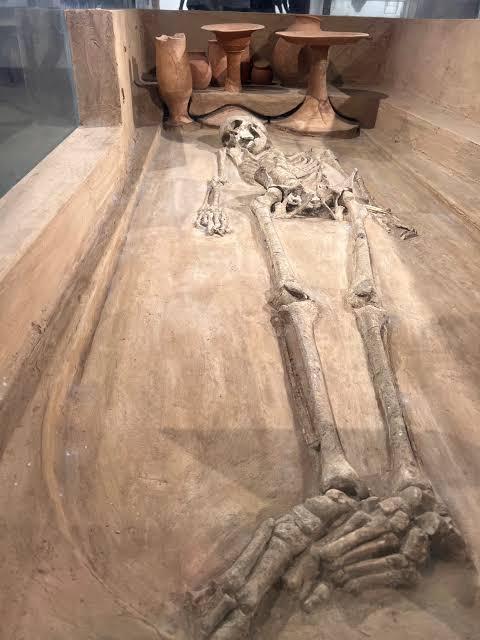The Largest Harappan Site Reshaping History

Introduction
Situated across 350 acres in the Ghaggar plain, Rakhigarhi stands as the largest known Harappan site, located 27 km from the seasonal Ghaggar river. In this groundbreaking discovery, Scottish archaeologist Jane McIntosh traces the site's roots to the valley of the prehistoric Drishadvati River, originating in the Siwalik Hills. The archaeological journey began in 1969, leading to significant revelations about the ancient Harappan civilization.

ASI's Extensive Excavations
Over several seasons, the Archaeological Survey of India (ASI) conducted thorough excavations at Rakhigarhi. In 1997–98, 1998–99, and 1999–2000, the ASI team, under the guidance of Director Dr. Amrender Nath, meticulously explored the layers of history concealed beneath the soil.
Rakhigarhi's Significance in Harappan Civilization
Identified as one of the five largest townships of the Harappan civilization on the Indian subcontinent, Rakhigarhi holds a pivotal role in reshaping our understanding of this ancient culture. The expansive site reveals the sophistication and complexity of urban planning during that era.
Human Discoveries at Rakhigarhi
In April 2015, the excavation team uncovered four complete human skeletons from the mounds, providing valuable insights into the physical characteristics of the ancient inhabitants. The average height, estimated at 175.8 cm for men and 166.1 cm for women, offers intriguing details about the population's stature.

Advanced Features of Harappan Civilization
Rakhigarhi provides evidence of an advanced civilization that thrived 7,000 to 8,000 years ago. The excavation exposed larger settlements featuring underground houses with two to six bedrooms, courtyards, and sophisticated drainage systems. These findings challenge preconceived notions about ancient societies.
Conclusion
Rakhigarhi's prominence as the largest Harappan site challenges our perceptions of ancient civilizations, offering a profound glimpse into the intricacies of daily life, urban planning, and societal advancements during a remarkable era. This groundbreaking research continues to captivate archaeologists and historians, providing a deeper understanding of our rich historical tapestry.
- Political Leaders
- Art & Crafts
- Dance & Music
- Sanatan Dharma
- Education & Training
- Food & Drinks
- Gaming
- Health & Fitness
- Home & Gardening
- Literature & Culture
- Love
- Medicine & Ayurveda
- Motors & Vehicles
- Movies & Cinema
- Parenting
- Politics
- Science & Technology
- Shopping
- Social Media
- Spirituality
- Sports
- War & History
- Yoga & Meditation
- Travel & Tourism
- Natural Disaster
- Business & Startups
- DIY & Home Decor
- Finance
- Personal
- News
- Pet Lovers
- Wild Life & Nature
- Podcast & Audio Books
- Poetry
- Law & Order
- Moral Stories
- Jokes & Humour
- Other

